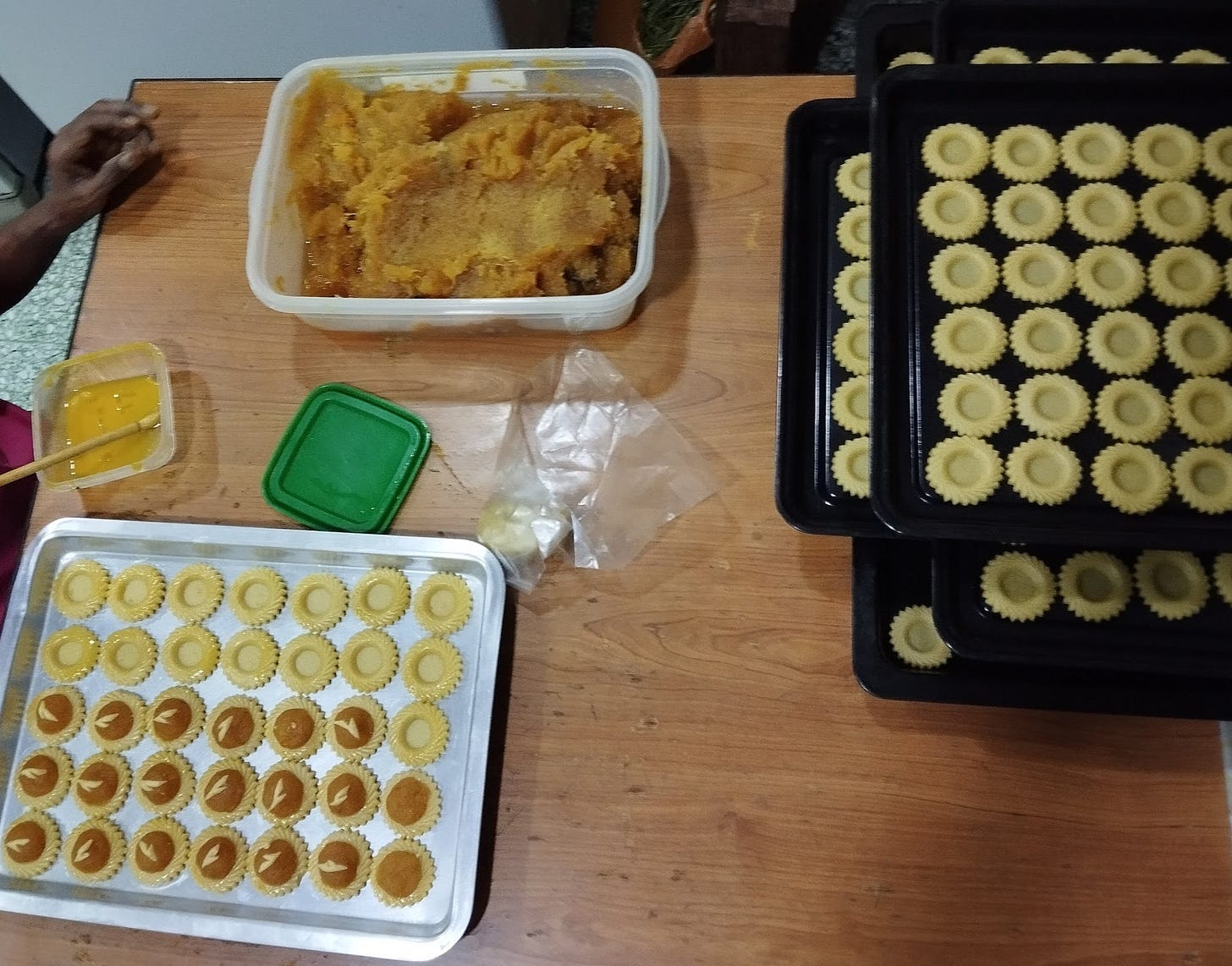Pineapple tarts have historically been made in Eurasian households for Christmas festivities. They have now entered the lexicon of Malaysian cuisine and can be seen in homes during festivities including Chinese new Year and Hari Raya.
In Janet Bouileau's thesis: A Culinary History of the Portuguese Eurasians she describes ' "Queijadas" (small tarts traditionally filled with fresh cheese (queijo) in Portugal) that appear as coconut and pineapple tarts in Asia' tracing their possible origin from Portugal.
Christopher Tan in his book Way of Kueh describes 'the rich, short texture of pineapple tart pastry to be 'very Dutch' and also to be found in other former Dutch colonies like Guyana. Even the name tart is from the Dutch word 'taarte' as is 'ananas' for pineapple.
Pineapples brought by the Portuguese from South America, European food technologies: jam making, baking (in ovens, with wheat based doughs), East Indies spices used in the recipe: cinnamon, star anise, and cloves, were exactly the spices traded by the Portuguese and the Dutch. Its only fair to deduce that authorship of the pineapple tart can only, truly, be traced to the Eurasian kitchens of Malacca.






